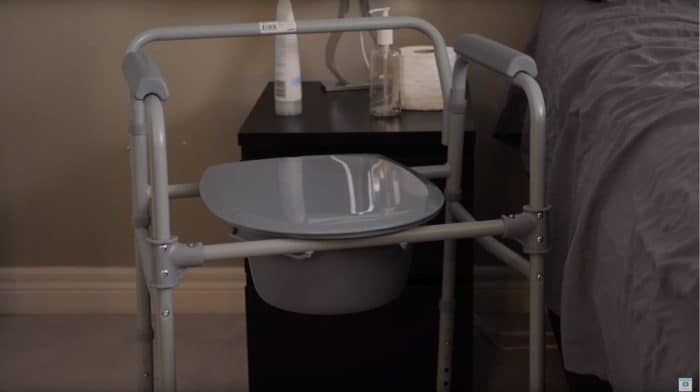How to Help with Range of Motion Exercises
Exercise can help you stay fit and healthy, but after an injury or illness, the person you’re caring for may have a hard time with a normal exercise plan.
In this video, we’ll review some common range of motion exercises and show you how you can help.
Exercise can help you stay fit and healthy, but after an injury or illness, the person you’re caring for may have a hard time with a normal exercise plan.
In this video, we’ll review some common range of motion exercises and show you how you can help!
Let’s try it
You’ll need a range of motion exercise plans to get started.
The plan is usually made by a physiotherapist to meet the needs and abilities of the person you’re caring for.
If suggested, have equipment close by and ready to use, such as a towel, elastic resistance bands, weights or canned food, or a pedal exerciser.
Start by sitting facing them, make sure they’re able to sit with their back against their chair and their feet flat on the floor.
Count the repetitions out loud that the physiotherapist recommended and do the movement yourself so that they can follow along
Slowly flex your neck forward and tuck your chin, then extend your head backward.
Side bend your head keeping your eyes forward, then repeat in the other direction
Roll your shoulders back, then reach one arm at a time overhead.
Relax your arms, then reach back on each side, then reach across your body
Bend and straighten each of your elbows then turn your hand palm up, then palm down. Move each hand in a circle, open and close your hand into a fist.
If you have a portable pedal exerciser, you can place this on the table and have them do arm cycles as well. Make sure they’re keeping their head high, their back and neck straight and encourage them to tighten their stomach muscles.
Remind them to breathe and not hold their breath, they should be able to carry on a conversation while exercising.
If they are having a hard time following along, try playing music and working to the beat. If they have a hard time seeing, try wearing brightly colored socks or shoes to make it easier for them to see your feet
Flex your feet up towards your head one at a time, then stretch them down and point your toes.
Have them scrunch a towel up with their toes and pull it towards them then sweep the towel to the left and right.
If they are able to do 15 repetitions without any problems, try adding weight to the towel, or for other exercises have them hold weights or some canned food!
Next, have them standing at the kitchen counter and with your hand on their back to keep them steady have them raise up onto their toes, and then back down.
Next, slowly lift one leg and balance for a few seconds. Switch legs and repeat. Give them plenty of time to complete their exercises.
With them lying on their bed have them bend their knees so their feet are flat on the bed and then instruct them to raise their hips and hold then lay down again. Always keep your instructions clear and concise.
Then have them raise their leg, hold it and put their leg down again. Repeat on the opposite side.
you might need to add in some exercises using resistance exercise elastic bands.
With the band looped around their ankles, have them do leg raises on each side. Move the elastic band to their knees and have them spread their knees out to the side and then back in.
There may also be times where the person you’re caring for needs to have you move them completely to do an exercise. If you need to do this, the physiotherapist will teach you how to do the exercises properly and with confidence.
Helping make sure the person you’re caring for completes their exercises will help maintain or improve muscle tone, strength and flexibility. This helps them stay as independent as possible with their daily activities.
For more videos to help support caregivers, visit CareChannel, your source for caregiver knowledge and skills






